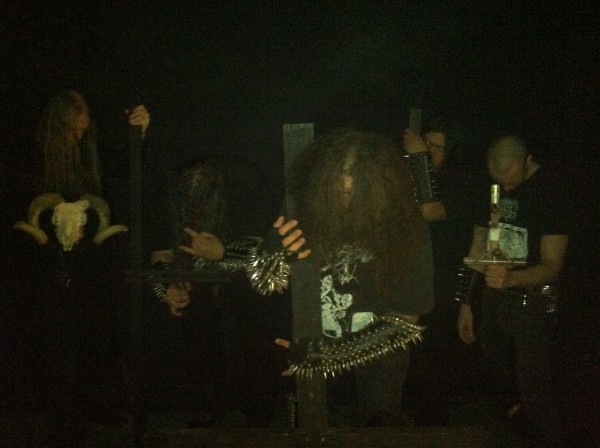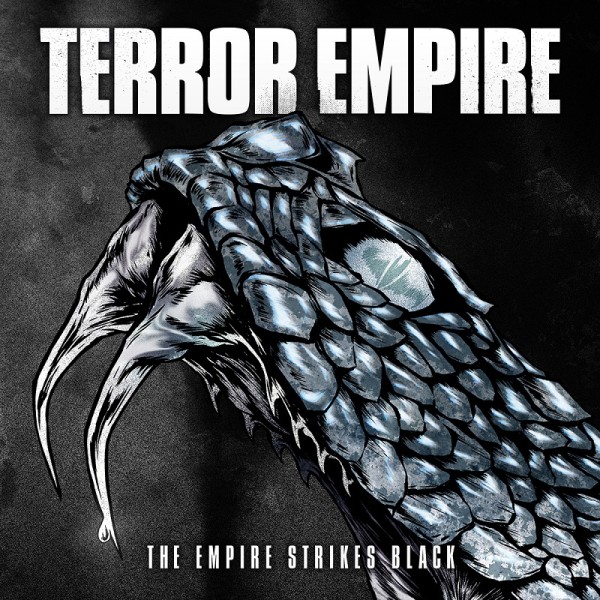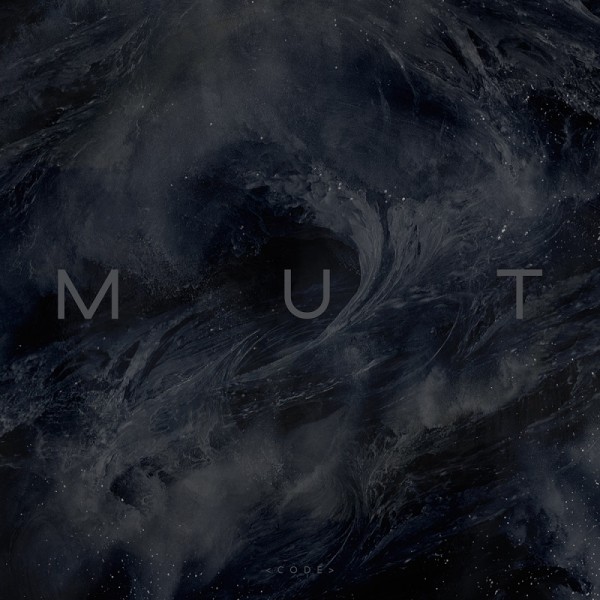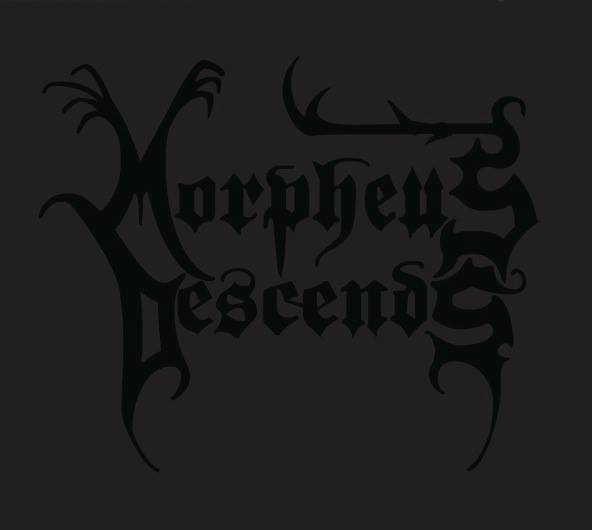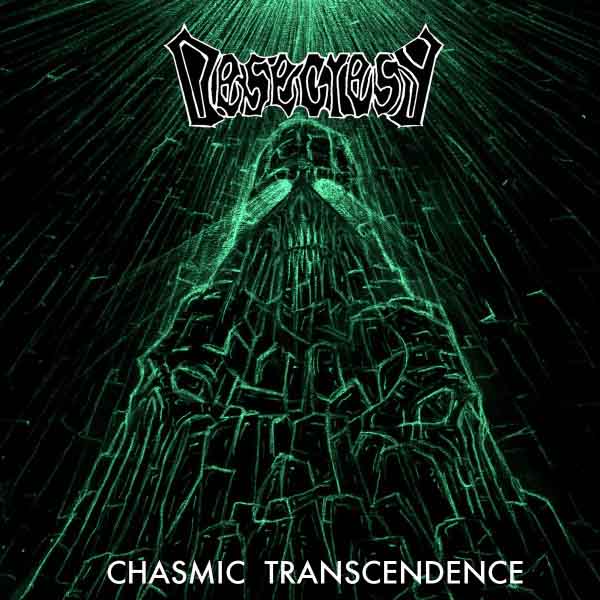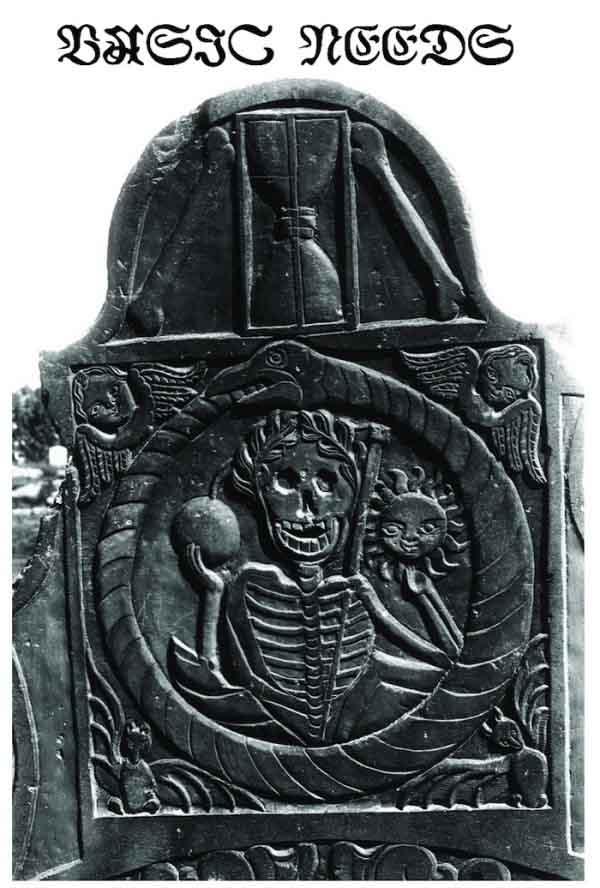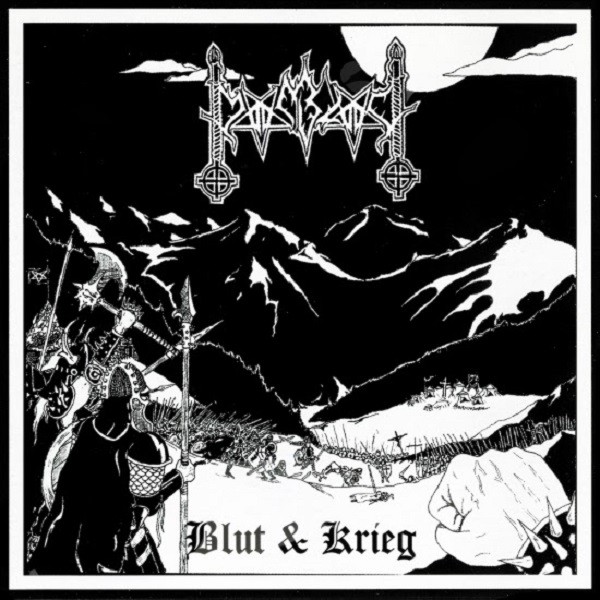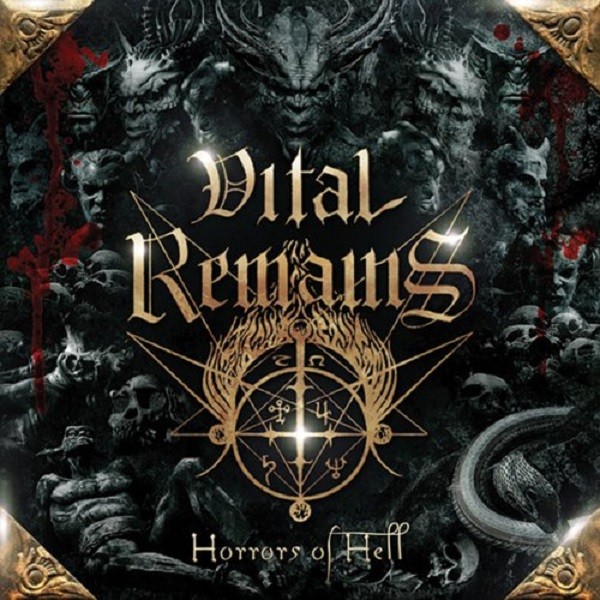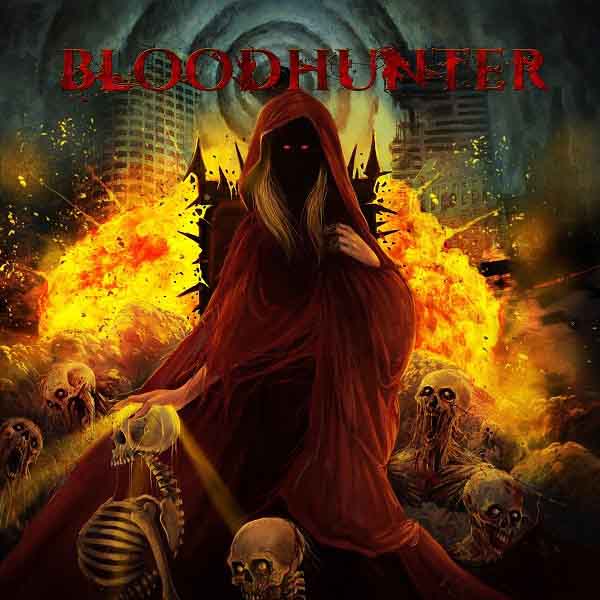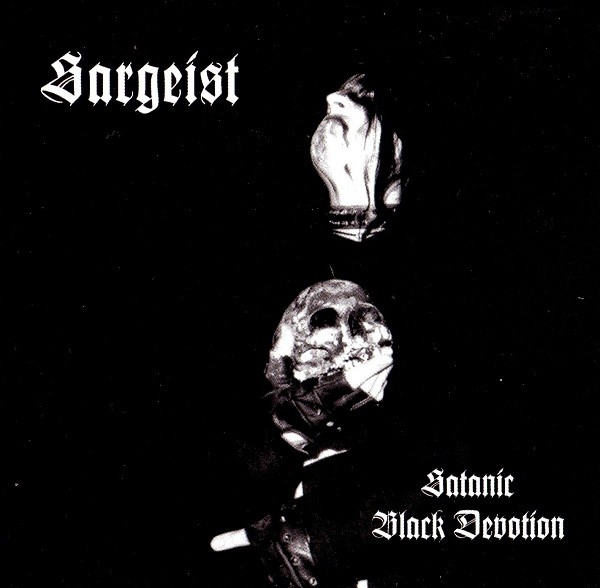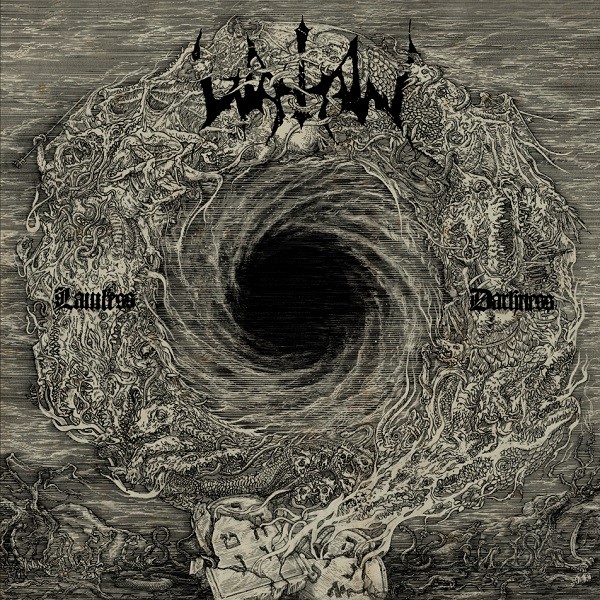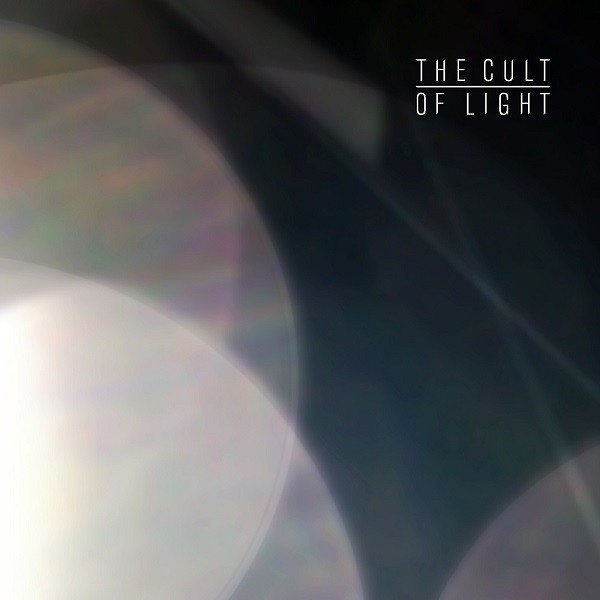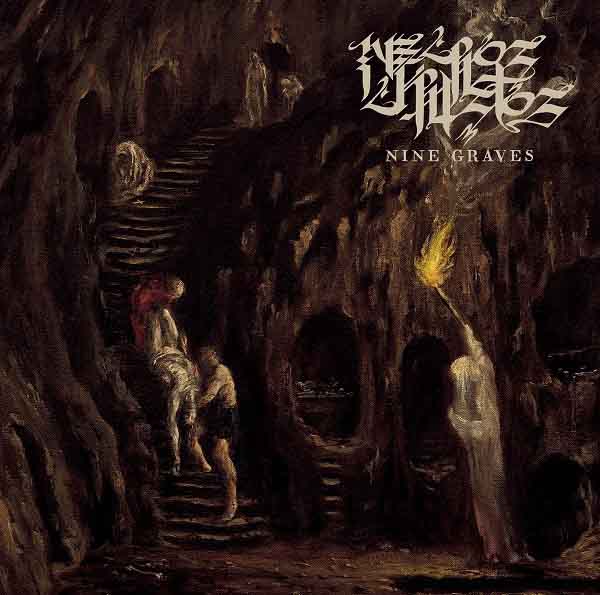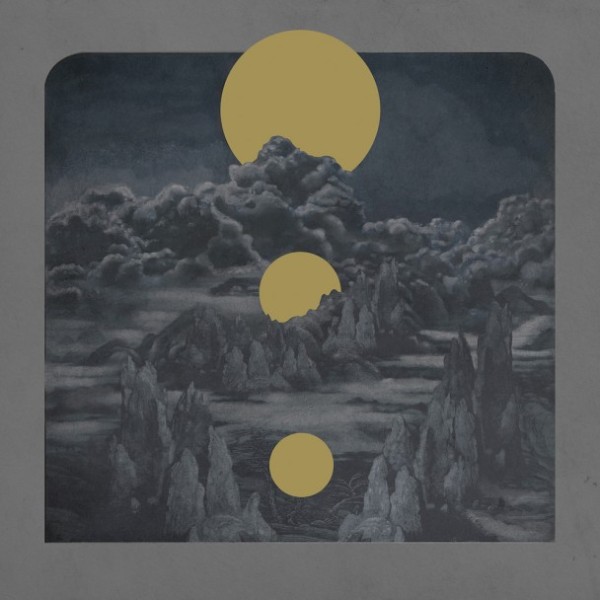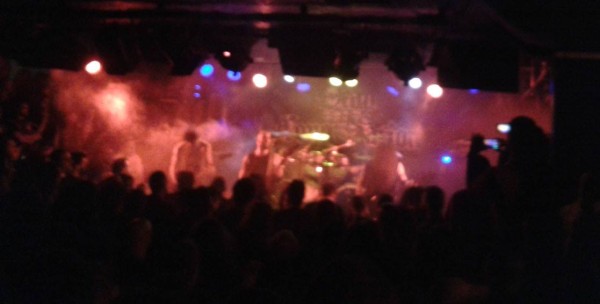Texas subterranean death metal band Blaspherian recently announced the planned release of a new album in 2015, tentatively titled Reborn through the Black Flames of Lucifer. According to songwriter/guitarist Wes Weaver, the band has already written four tracks for the new release.
(more…)
#metalgate goes mainstream as Machine Head flails on
The SJWs keep up a simple strategy for dealing with #metalgate: pretend it never happened and, if it did happen, it died an early death.
Instead, #metalgate is ramping up as the collision between Political Correctness and heavy metal intensifies. Recently metalcore band All That Remains’ vocalist Phil Labonte made some comments that riled a few basement neckbeards:
In 2005, on the ‘Sounds Of The Underground’ DVD I said, ‘PC is for f–gots.’ That was the first time people went, ‘Whoa, what did he say?’ I have nothing against gay people. It’s just a word. Honestly, I think the only people that have a legit grievance when it comes to any racial slurs is the black community. I know the homosexual community has problems with it and I understand their hurt feelings.
But homosexuals were never property. They’ve had a rough time and I’m not trying to minimize that, but I think the black community has a whole lot more room to be upset about a word than the LGBT community.
Apparently this outraged and upset Rob Flynn of alternative-metal band Machine Head, who seems to spend a lot of time on Facebook. He carefully assembles a series of clichés and strung them together into a post which raged against Labonte:
Where are the god damn protest songs? Where are the “War, What Is It Good For’s”? Where are the “Fight The Power’s”? Where are the white metal bands protesting about Ferguson and Staten Island? Why don’t metal bands stand for anything anymore? When did we reach this point in society where it’s unpatriotic to question our military or our police? Why are so goddamned proud to just fall in line?
Here we see the underlying issue that propelled #metalgate rising to the top: the PC people recognize only certain issues, but metal is in fact fighting back against the actual problem, which is a religious approach to reality denial through secular (but unrealistic) politics. In the PC view, if we just change our thinking, we have changed reality. This is why for SJWs it is essential that everyone think the same way, speak the same way and act the same way regarding political issues. We will be in lock-step like good Nazis/Communists/Christians and since we will all be uniform, no deviation can occur. Problem solved! …right?
The metal point of view takes an entirely different approach. In the metal view, problems do not go away until you find the root and fix it. People do not “just get along.” In fact, the more you push people to publicly affirm an idea, the more they resist it in private. In the metal view, there are no magic bullets like laws, rules, and speech codes that fix problems that have persisted since the dawn of humankind. In the metal view, it seems reckless to — knowing that these problems exist — bring them into our communities by demanding that we “tolerate” the endless clashes that result.
Flynn’s rant is stupid because he refuses to acknowledge that metal has for years endorsed sensible responses, but they are not ones that are politically correct because they do not affirm the public paradigms that everyone else is affirming. Every major corporation, police department, court, Congressperson, media outlet, and metal magazine agrees with Rob Flynn and will enthusiastically say so. They do this because people act as a herd, and while the herd is always wrong, the herd rewards its own. His opinion is not radical, it’s the norm. Metal has resisted the norm and this is why it upsets him. He even admonishes us to be more like Bob Dylan and John Lennon, two hypocrtical Baby Boomer communists who quietly enriched themselves while talking up the working classes.
Let’s face it: in the highly politicized decade in which we live, songs about social justice are the equivalent of love songs in the 1950s. They offend no one. They shock no social norms. They give people something to bond over, which is how terrible gays, lesbians, women, minorities and other groups who should be pitied are treated by the bad white people. Because, see, SJWs are the good white people — and the vast majority of SJWs are college-educated whites who didn’t quite hit the jackpot, the same audience that creates all the hipsters. Being into social justice is their way of showing you that they are “good” (and thus concealing all that is bad about them behind that symbol of goodness) like politicians kissing babies or celebrities giving money to the homeless. SJW metal is like Justin Bieber except instead of using candy pop to sell records, it uses candy opinions and recycled hippie cons to make you think the people behind it are “good” even though you know only one thing they think or do and the rest is concealed.
Metal says that society is illegitimate because it denies reality. Whether that is through its approach to religion, politics or social activity, it is all lies: it would not be popular if it were not a lie. That is not the same as saying “because it is popular, it must be a lie,” because some things are popular for simply being catchy and vapid, and sometimes society is even correct. But it says that only lies or other things which do not threaten the human pretense at the root of our rotting society become popular. Thus, if you see that all the dunces are in confederacy in favor of something, be suspicious.
http://www.youtube.com/watch?v=vou_0RW5T5g
SJWs have a simple plan. They will censor through guilt. This allows them to avoid using Nazi-style government tactics to enforce speech codes when they can simply make Soviet-style speech codes mandatory by attacking anyone who does not agree. Rob Flynn is the witch-hunter here, the same sort of person who 200 years ago would have burned witches when the crops went bad, hung black people without a trial when a rape happened, or even a generation ago would have banned kids from school for wearing all black. He is the totalitarian. He and the SJWs are using “social justice” as a means to seize power and subjugate the rest of you. Metal — nearly alone, but with a few brave others in #gamergate — is resisting this authoritarian takeover.
The same thing gets tried every generation. Charlie Hebdo was attacked so that all cartoonists and writers would think twice about criticizing Islam. Despite all the protests by people who were at absolutely zero risk, and all the warm fuzzies from media about how free speech will save us, the result of the attacks is more crackdown on people who criticize Islam, both from governments and their insurance companies who do not want to pay out for preventable deaths. The PMRC’s campaign to have record warning labels made law failed, but the legal campaign won because it intimidated record labels into putting the warnings on those records or they could not get them into stores. SJWs will do the same thing by labeling some metal as “verboten” because it did not join their politically correct view of the world, and then it will be unable to be sold openly. That is their goal: censorship. Their method is a 2.0 to book burnings, public executions and other censorship 1.0 techniques, but it aims at the same thing and is more effective.
You can see how Bieber-like it is when you look at this comment on Mr. Flynn’s comments:
You just GAINED one more fan. I don’t even know what you sound like yet.
The SJW outlook is not new. It is not revolutionary. It is what governments of the USA and EU endorse. It is in fact conformity. They however want to convince you that their ideas are “revolutionary” so they sound unique, different and exciting. They want to look like brave outsiders denying the will of shadowy oppressive forces and liberating us all. In fact, they are attempting to enslave us all — wonder who our Al Sharpton will be — and they are every bit as mainstream, ordinary and socially accepted as Justin Bieber. They appeal to the herd by telling it what it already accepts, just like Bieber offers music with absolutely no surprises that resembles every big pop act that went before it. But if you listen to them, they are heroic Christ-like bearers of enlightenment and the rest of us are just idiots in comparison and should be silenced as a result.
47 CommentsTags: censorship, gamergate, Heavy Metal, metalgate, political correctness, sjws
Terror Empire – The Empire Strikes Black
Through the years of scanning endless lists of metal albums one gradually develops an intuition that links band name, album name and artwork to the general nature of what will be heard. Seldom does a tongue-in-cheek name correlate with quality music, since the band designed itself as a stunt. While some serious-sounding names result in pretentious self-important music, most bands with confidence in their ability to produce valuable music choose a straightforward self presentation.
The following question measures heavy metal: what is quality, and how is it measured, including what standard we use? Our answer begins with the often-used but seldom explained (and hence little understood) terms superficial and transcendent as opposite poles in a spectrum. Through the ages philosophers, theorists and artists themselves have made used these terms and in only a handful of instances have they tried to explain them in any way beyong what is deemed self-evident. The young Nietzsche provides us with a useful term and its explanation which can be used to separate the concepts in a way that if not empirical enough at least can be understood as a general concept. The Dionysian, it is said, allows for a connection for the unchanging, eternal oneness. This can mean many things, but guiding ourselves by Nietzsche’s explanation in the context of Greek tragedy and the nature and significance its chorus, we can see that the Dionysian is a subjective measurement requiring the person in question to look beyond the cycles of history and recurring social trends that are a result of the human race constantly altering its surface appearance but not actually “growing” in the sense of improving. Once in touch with this, the artist can represent the essence of things as they always are, not as they appear at this moment in time. On the other hand, being trapped in the temporal interpretation of how something is at this moment, or how it appears to be in its current incarnation is the hallmark of the superficial.
For us to make the distinction between transcendent and superficial in a work of art, we must isolate any insight of human nature that the work expresses. Because all of reality is the same cause, all paths if followed with vigorous examination lead to the same truth. Acquiring the insight that the transcendent artist possess does not mean we ourselves need to have his artistic talents as well. These are abilities of a separate kind altogether. As Nietzsche tells us in the same writing, while the rest of us must use abstractions and complex explanations to arrive at an objective picture of the work of art, in his subjective vision, the artist contemplates the images of his expression clearly and in unexplainable simplicity independently of its degree of superficiality. We can analyze that vision according to what it communicates and whether that address the transcendent, the superficial or the “fake out” of superficial transcendence.
With all this in mind, a first glance at Terror Empire’s album cover and album name is enough to raise some red flags. The cover artwork does not relate to the title. The title further shows a tendency toward cliché and a “cute” manipulation of it. This lack of originality is then reflected in the music itself. The album shows an diversity of approaches ranging from early songs which incorporate related but meaningless constructions with abundant technical acrobatics to late songs which are basically “thrashy” chug-based generic speed metal songs. The former are meaningless in the context that the writers themselves put them in. They make structural premises, but then do not follow them or conclude them structurally. As in many mediocre examples of music, songs end suddenly without being taken to any sort of climax, deviation to a clear point and return. The latter part of the album fails by being an imitation of speed metal (aka “thrash metal”) tropes seen through the modern lenses of retro-thrash.
This book can be judged by its cover, which the band apparently views as attractive to the type of person who will not realize how completely pointless The Empire Strikes Black is as a metal listening experience. Those who seek novelty tend to find it. In the spirit of the master, Bitterman: Vapid. Avoid.
5 CommentsTags: Heavy Metal, nordavind records, Speed Metal, terror empire
Code – Mut
Mut presents us with a perfect a sample of a band becoming completely irrelevant by taking the world personally and as a result becoming entirely self-referential. Code never hides its true colors and you know what to expect right from the very beginning: sure-footed, emotional, but ultimately pointless meandering rock music. If the reader wants a reference for what to expect here, you can find it in Muse or everything Cynic put out after Focus, especially their last album.
Let’s start nicely with what this band does know how to do. The musicianship is undeniably professional. This album creates atmosphere by expanding one idea and letting it grow like a vine, always seemlessly. This is done so expertly that while the idea of the song still holds, their extension of it is truly delightful. The guys also have a keen ear for textures and harmonies that are never out of place. The album could well become an academic study in refined harmony for indie metal. The indie component is especially prominent in the type of dissonants they introduce.
The indieness of it all oozes a post-something feel in a blend that makes it very whiny and monotonous. And this last point is what brings us to the main problem this music faces: it never moves on from the initial idea. In every song, Code presents us with an episode and then whines about it at different volumes and with different layerings. There is no movement, no direction, no development. If you are picky, you could also hint at the extremely commonplace and almost tongue-in-cheek use of Arabic/Spanish motives, but in my opinion this is more a matter of preference and it is not as big as a blemish as the complete lack of development.
Code is obviously formed by accomplished musicians who are unfortunately not clear-minded composers with a goal outside emotional self-expression as is required to make great art. Concept always guides results. This band at least has a center. But they need firmer land, more fertile soil and somewhere whence they can contemplate visions of possible destinations, and not remain crying inside a dark cave in which they can only see the same humid wall.
No CommentsTags: code, indie rock, post-metal
Morpheus Descends – From Blackened Crypts box set in pre-order
Dark Descent Records announced the pre-order of a CD/DVD box set of classic underground death metal band Morpheus Descends (formerly Morpheus) featuring two CDs and a DVD including all past material from this formative act which influenced Suffocation, Cannibal Corpse and many other death metal bands from the early 1990s.
The box set will include, in addition to the 2CD digipak, two new and unreleased tracks wich will see issue as a separate 7″ entitled From Blackened Crypts and a DVD entitled Visage of Malady, as well as a 11×17″ double-sided poster and 24-page booklet. The tracklist is:
Disc 1
1. Oozing from the Urn
2. The King’s Curse
3. The Way of All Flesh
4. Corpse Under Glass
5. Immortal Coil
6. Trephanation
7. Proclaimed Creator
8. Accelerated Decrepitude
9. Submerged in Adipocere
10. Enthralled to Serve
11. Ritual of Infinity
12. Trephanation
13. Accelerated Decrepitude
14. Triformed Limbs
15. Stigmatic Crucifixion
16. Residual Kill
17. Cairn of Dumitru demo 93
Disc 2
1. The Cruciform Hills
2. Cairn of Dumitru
3. Autumn Bleed
4. Signs of Gehenna
5. Moupho Alde Ferenc Yaborov
6. Begging for Possession
7. Valley of Undead War
8. Shaitan the Unborn
9. The Horror of the Truth
10. Corpse Under Glass (Live Reunion-Martrydoom)
11. Accelerated
12. Trephanation
13. Triformed Limbs
14. Accelerated
15. The Cruciform Hills pre-release ’94
16. Residual ’91
17. Autumn Bleeds ’93
For more information, see the pre-order page at Dark Descent Records.
12 CommentsTags: dark descent records, death metal, morpheus, morpheus descends
Death Melodies: Fryderyk Chopin

Fryderyk Chopin (1810-1849) was a Polish composer and virtuoso pianist who lived out most of his brief but stellar career in Paris, where he died of tuberculosis at the age of 39.
Chopin mixed with the musical elite of his day, developing friendships with top composers and performers, particularly with the Hungarian virtuoso and proto-Hessian, Franz Liszt. He was not keen on public performance, a fact reflected in the intimate atmosphere of his music. However, he was a very successful piano teacher, and managed to earn comfortable wages by giving lessons to the Parisian elite and their children. His health was always bad, and his short life was troubled, but it was also intensely productive, and his body of work remains some of the most emotionally compelling and technically demanding music of the Western classical canon.
Though Chopin’s technical ability and fluency in classicist forms is undeniable, the most enduring element of his work is the profound musical intuition from which its construction seems to arise. Perfectly capable as he is of constructing a fine piece within traditional forms, his best work seems to occur when he listens closely to his own material, and allows it to naturalistically develop and suggest its own structure.
Chopin wrote most of his works for his own instrument, the piano, intending them for performance mostly by himself, usually in front of a few friends. The organic origin of these works shows in their fluid structure and their patient development; the changes that come at exactly the time where they will make the most emotional impact, not necessarily where they would theoretically make the most structural sense or be most immediately pleasing. This characteristic brings him close to underground metal, music in which there is both no divide between composer and performer and, ideally, little concern for audience expectations, but where emphasis is instead placed on genuine, valuable and intense expression.
A great example of Chopin’s emotional intensity, technical ability and structural ingenuity is his second piano sonata, in b flat minor. Although most of the piece’s movements are written broadly within conventional forms, the first being the expected sonata form and the next two being large ternary forms, Chopin manages to create the sensation that this large scale architecture arose naturally from the material, instead of being imposed on it.
We often find in the work of Romantic composers, even in the some of Chopin’s lesser works, a conscious attempt to hide underlying classical forms through over-extended or jarring transitional passages. This sonata has no need for such tricks: the thematic material and the relationships between it are so strong that the flow is seamless throughout. The material itself is of a mostly lyrical and impassioned nature, the axis for most of the themes being melodic. It is thus that the howling arpeggios of the fourth movement come as an intense shock, especially after the famous “Funeral March” of the third movement (which Candlemass covered on Nightfall). Even more rattling is the movement’s swift and violent conclusion. Though seemingly pointless, placing this little movement here is a stroke of narrative genius; it lets the listener know the piece is irrevocably over, and yet it feels unsatisfactory, it leaves one with a melancholy longing. The technique is similar, although the effect is altogether different, to the one used in Burzum Det som en gang var, also a piece organized in four main sections, whose last riff comes rather unexpectedly and then simply fades off into the distance.
There is another very important element that links Chopin’s music to underground metal: his great ability to be impressively creative within self-imposed limitations. The most evident of these restrictions is of course instrumental, as he chose to write most of his music for the solo piano. Obtaining strong results from a limited instrumental palette is of course a very familiar concept to a fan of underground metal. His spectacular waltzes and mazurkas also show him extending a limited rhythmic format to powerful expressive and structural heights, without ever abandoning it entirely. It is in these smaller pieces that Chopin’s tendency to generate structure from content is at its most alive.
A piece with seemingly unexceptional or bland material, such as the Prelude No.4 in E minor, is turned by clever and patient development into a masterpiece, whose economic simplicity only serves to emphasize the power of each event, however minor it may seem. The piece revolves around the thwarting of tonal expectations, a simple enough technique out of which Chopin carves a funereal dirge of both enormous emotional impact and absolute structural perfection. Chopin transforms formal and instrumental restrictions into challenges, forcing himself to find creative avenues around structural problems. This may be one explanation behind why practically all of Chopin’s best pieces are driven by strong melodies; he leaves himself no place to hide.
The Nocturnes are the obvious place to start with the music of Chopin, and for good reason. My personal recommendation would be Claudio Arrau’s 1978 set. Though not all the Preludes are equally good, the whole set is definitely worth a listen, and Martha Argerich’s 1977 DG recording is one of the finest options out there, and it also contains a marvelous rendition of the second Piano Sonata. Also of note are Dinu Lipatti’s disc of Waltzes for EMI and Krystian Zimmerman’s 1988 DG disc of Ballades and miscellanea. Outside the world of solo piano Chopin shines less, even his piano concertos suffer from a poor understanding of the orchestra. This can only serve as further proof that Chopin’s genius lay in his musical intuition, through which he allowed pieces to develop themselves organically in order to reach greater heights of expression, as opposed to merely accommodating themselves to an abstract formal plan. The kinship between Chopin’s fiercely expressive, instrumentally virtuosic and structurally organic style with underground metal is a clear one, and all Hessians are strongly advised to acquaint themselves with the Polish master.
10 CommentsIn-depth analysis: Desecresy – Chasmic Transcendence
The seed of Desecresy’s music contains a basal melodic notion or two, not without poignant appeal, which then comes to gradual bloom in an unhurried, self-assured manner. Songs on principle do not outstay their welcome but Desecresy’s approach towards writing revolves solely around realizing vehicles for this germ of an initial premise, in the process sublimating the interstitial stuff that goes into the making of a fully-fleshed, narrative piece.
Flirting rarely with outright aggression, Desecresy prove adept at developing the elegant, bittersweet melodies typical of Finnish death metal, using a mid-tempo style reminiscent of Bolt Thrower, Vore, and Ominous Crucifix for these hooks to sink in. The result is an album curiously devoid of visceral thrills but one that will serve perfectly well as amicable background accompaniment.
This is no slant against the band. Desecresy’s intentions are redoubtable but they could conceivably be making more resonant death metal if they gave away their Honour-Valor-Pride CDs and let their collective imaginations take flight. While the lack of variation in speed renders a sameness to much of Chasmic Transcendence, it is obvious that this is of the band’s volition. Desecresy choose to meander along this detourless path, confident in betting the house on the inherent quality of the melancholic nuggets they litter through the album; more than a few of these are thoughtfully crafted, and capable of launching songs on an altogether different trajectory in another band’s hands (see Creepmime or Deathevokation). Unfortunately, for Desecresy, the monotonous, simplistic nature of bridges linking these phrases — usually little more than a muted, open string or rambling, inconsequential power chords — makes these songs a game of waiting for the next cute part.
This, of course, is a caveat of this particular style of droning death metal; the few good bands trawling these waters are able to create a consistent mood on an expansive, album-wide scale. Desecresy can certainly not be accused of striking discordant notes in this respect; Chasmic Transcendence is a relatively seamless experience but that is a low bar to meet when the band’s sense of adventure clings so close to the ground.
13 CommentsTags: atmosphere, chasmic transcendence, death metal, desecresy, drone, xtreem music
Various Artists – Basic Needs
The Basic Needs compilation of New England metal and hardcore punk bands can be heard online and purchased on cassette for those who wish to own a physical copy. Promoted by the shadowy forces behind Codex Obscurum zine, Basic Needs contains fourteen tracks of varied material from almost as many different bands, so it makes sense to review them by track.
- Sagnus – “Gaspipe”
This track starts off in a death metal vein but rapidly descends into bluesy heavy metal with updated technique like At the Gates Slaughter of the Soul. Nicely compact with no surprises but also no random or pointless bits, it fades out into noise. - Human Bodies – “Stygian Reverie”
Very much in the tradition of older hardcore but with black metal styled vocals, this Human Bodies track puts a new face on a familiar riff style and adds a Discharge-like chaotic solo, but otherwise sticks to fairly standard song form but keeps energy high. - PanzerBastard – “Workhorse”
Essentially d-beat hardcore, complete with broken rhythms and surging double-hit riffs, this song showcases high energy with emphasis on vocalizations. - Sexcrement – “Chemical Handcuffs”
This track starts off as pounding death metal but detours into a hard rock/heavy metal number that shows the band setting up a groove and more internal harmony, which actually makes the chromatic passages seem less intense. - Suffer on Acid – “Ride the Light”
Raging high-intensity hardcore from the “blurcore” style that emerged when the punk stalwarts confronted the horror of post-hardcore, Suffer on Acid creates music from fast simple riffs with exasperated shouting over the top. This track begins with a Black Sabbath style introduction riff that sets a mood to be destroyed which it is, amiably, by a thrash-style burst of collisive riffing and a classic hardcore punk extended chorus riff. - Living Void – “Auxiliary Conspiracy”
Writing in the fast style of death metal that bands like Deteriorate and Nokturnel pioneered before Angelcorpse, Living Void charge ahead with a series of quality riffs but then slow things up for a trudge/groove passage. The former strikes more than the latter. - Suffer on Acid – “Terminal”
Much in the style of the former track, “Terminal” relies more on vocal rhythmic hook and uses a standoffish groove more than burst but fits in lots of vocal rage and fast classic hardcore riffs to match. - Living Void – “Categorizing Woe”
This track starts with a doom metal promenade, then drops into trope of muted downstroke before bursting into high energy speeding death metal complete with blast beats and ripping choruses, the detouring into a darker and more black metal styled cycle. - Ramlord – “Distant/Detach”
At its heart, this track is older speed metal updated with death metal stylings to give it energy and more fluid transitions, but falls back into trope rhythm of vocals/drums in which the guitars drop like an interchangeable part. Some interesting black metal styled melodic work later in the track. - Grue – “All Mortal Greatness is Disease”
Beginning as a sentimental heavy metal/melodic black metal track in the Eucharist or Dawn variety, but then diverges into a chanted delivery of later Bathory-styled vocals over trudging rhythm riffs alternated with fast melodic hardcore riffing. - Word of Unmaking – “In the Crypt of Dead Values”
A Tangerine Dream style dronescape peppered with acoustic guitars and vocal samples, this track develops from linear into cyclic and recedes, leaving behind a homeostatic hint of atmosphere, then expands into a funeral doom track with articulated riffs like those from early Ceremonium. - Fórn – “Dasein”
What’s with all the Heidegger worship recently? This sludgy doom metal track follows the Winter model of slong grinding chord progressions with lots of fills from noise and vocals, changing riffs relatively frequently over this nine-minute track. - Morne – “Coming of Winter”
Sounding like a heavier version of Pelican, this band creates droning indie-influenced doom metal with heavy stoner doom elements and a hoarse plaintive vocal.
Of unusually high quality for a local compilation, Basic Needs shows a wide variety of the more promising bands in New England. Living Void, Word of Unmaking and Suffer on Acid strike me as the standouts which interest me in investigating further but there were no complete dead moments.
4 CommentsTags: d-beat, death metal, Doom Metal, Grindcore, Hardcore Punk
Sadistic Metal Reviews 01-19-15
Why do most people lead lives of quiet desperation, obeying all that they must do, and then choose boring and pointless music on top of it? Nonsense music flatters the ego and requires nothing of the listener. No person of any quality lives that way, so it’s time to force people upward and not outward, with the sweet tears of poseurs, hipsters, scenesters and tryhards occasioned by these Sadistic Metal Reviews…
Moonblood – Blut and Krieg
When black metal died in 1994, it did so by losing sight of its direction. In art, direction takes the form of something which can be communicated only through metaphor, an idea in formation. In part, black metal had given its ideas to the world and was sitting back to watch them spread, but in another sense, the message — a copy of a copy of a copy at that point — simply got lost as bands imitated the form without the substance of those that inspired them. The Moonblood review exists in the last sentence, since this album represents all that is odious in music: an imitation of the surface configuration and emotional tropes of a genre not only while not understanding what the genre and its founders valued, but without even trying to make coherence out of the noise. Most people like this for the vocals which are like a hybrid between Varathron and old Mayhem, and maybe they enjoy the winding minor key riffs, but the fact remains that these songs go nowhere. They set up a sensation, loop through it, and then end with a convenient exit like a hipster suddenly realizing the people at his party not only do not eat quinoa exclusively, but cannot pronounce “artisanal.” Lack of direction is fortunate for Moonblood since these songs wander when attempting to extend themselves because they have no center and no purpose. It is not surprising that shoegaze took over from this weakened form of black metal because this is directionless atmosphere that apes the past but approaches none of its value or even ability to communicate. In comparison, this is incoherent posing.
Vital Remains – Horrors of Hell
If you see this in a sale or cut-out rack, you will perhaps feel it unjust. But compilations of demos tend to show a learning process, which means they start with the early attempts the band would rather forget (which is why bands tend to put boring covers on demo comps) and slowly work their way up to the ability level and hence material that you are accustomed to hearing. The demo that most are buying this for is “Reduced to Ashes” from 1989 which is the foundation of Vital Remains as a death metal band. This six-song offering shows the nascent death metal genre still emerging from a hybrid of speed metal (Metallica), thrash (DRI) and varied standout influences like Slayer, Sodom and early grindcore. In particular, large parts of this demo sound like they were heavily influenced by Repulsion, from riff style to the tendency to bring songs to a quick peak and then break away to a recapitulation that restates the main theme in coming and going perspectives. Vocals sound like the grim rant of Repulsion with all of its rhythmic power inherited from thrash, rather than the chant of speed metal or the full death metal growl. Riffs could fit on a Possessed or Dark Angel album, generally avoiding the muted down-strum of speed metal but not fully into constant tremolo of death metal, choosing some of the recursive open strumming of heavy metal. Rhythmically however this band does not fit into death metal. As in the first Possessed album, the drummer stays within the speed metal idea of aiming for concrete resolution at the end of each phrase, instead of recognizing that post-Discharge drums follow the guitar and thus must keep a continuous phrase. Although the band clearly knew more music than many of their contemporaries, it’s a stretch to call this “death metal.”
Bloodhunter – Bloodhunter
Imagine the melodic style of At the Gates Slaughter of the Soul that did not attempt to hide its roots in heavy metal and some speed metal, instead of death metal. Bloodhunter has the same strident emo death vocals that At the Gates and The Haunted put to good use, but the underlying music comes from the melodic heavy metal camp with some of the technique of speed metal filtered through power metal. This means for the most part that songs follow the intro-verse-chorus format but that the band will double riffs with a melodic guitar attack and break songs for lengthy solos or other classic heav metal tropes. As a result, this album flows easily and abandons much of the pretense of profundity that flows from the more metalcore offerings, preferring instead to be heavy metal with a few observations of life and a triumphant attitude. Nothing here will surprise the experienced heavy metal listener but most will appreciate its competent musicality and ear for songs that are enjoyable to listen to as well as hard-hitting within the range that this style can achieve. Riff diversity is high, spanning a wide range of tempi and styles including NWOBHM, all updated with the newer approach to rhythm that emphasizes constant forward motion in the speed metal style. Where this band falls down is in trying to distinguish itself with whispered vocals and (excruciating cliche of cliches) a sampled intro from a Tarantino movie. Bloodhunter does best when it sticks to its strengths. This album will not be varied enough internally for death metal fans but should delight power metal and classic heavy metal appreciators.
Sargeist – Satanic Black Devotion
Experienced reviewers wince at tryhard titles like “Satanic Black Devotion” because they indicate advertising, not a coherent statement from the band. Satanic Black Devotion might as well be a can of pureed, processed, sugar and salt added, preservative enhanced black metalTM. Imitating the style of later Gorgoroth and droning melodic black metal like Ancient or Marduk but with the chaotic approach of the first Krieg album, Sargeist is long on vocals and short on song construction. They hit on a few good riffs here and there and deliver those like Christmas presents, then repeat them ad nauseam. Most riffs show a tendency to cycle between symmetrical extremes and so fall into the same boring tropes as later hardcore did. Plenty of sawing guitar adorns this album as do riff patterns from past black metal albums but these are arranged in pleasant repeating rings that do not develop in any particular direction, leading to the listener’s brain grasping a bunch of droning minimalist guitar with an occasional melodic hook. Songs express nothing other than participation, and the inclusion of local band B- riffs alongside more developed ones leads the reviewer to wonder if the band has cribbed its best moments. Several patterns are note-removed from essential parts of Gorgoroth songs, but without the strong buildup, the Christmas riff drops in as a sudden variation and not a culmination or enhancement. This album does better than most because the band keeps the energy high and is smart enough to use the same song structure again and again to present its few powerful riffs, but the result of this randomness is more of what black metal wanted to escape, not create.
Watain – Lawless Darkness
Pretense is the fundamental state of humankind. As apes with linguistic brains, we rage against our impotence and insignificance and come up with poses: “I am important because I am good, smart, rich, sexy, hip, unique, different, wise, etc.” For some, the pretense is more or less accurate. These we call arrogant instead of pretentious. For others, in fact for over 99.98% of humanity, the pretense is merely self-important vaingloriousness backed up by nothing other than some hipster friends, a few possessions, or maybe a claim to fame like having punched out a local celebrity. Watain launched themselves with Rabid Death’s Curse, a pop black metal album in the style of The Other Side from The Abyss which won fans for its simple direct melodic songs. Several albums later, it becomes clear these guys do better giving interviews on metal theory (where they exceed almost all others) than writing music. Lawless Darkness resembles the kids show at the circus where as soon as one act fades another takes its place in relatively random order with the goal being to distract the audience so they eat up more of that popcorn and cotton candy. The album opens with dramatic violin, but then drops into disorganized metal music where riffs are joined through energetic flourishes of drum and Pantera-style bounce riffs. These songs make “sense” in that they follow a basic rhythm but most of what is written here is closer to the technical speed/death riffing of Behemoth than black metal, and none of it serves to build an atmosphere other than constant distraction. It is in fact comically random and empty of message. Presumably the ringmaster coems out and doffs his top hat and juggles live frogs somewhere in here to keep our attention but the music utterly fails to do so.
The Cult of Light – The Cult of Light
Crafted in the style of Meshuggah rather than the metalcore it partially inspired, The Cult of Light creates rhythmic speed metal — similar to Prong, Exodus, Pantera and various proto-prog bands like Anacrusis and Supuration — which installs a jazzy bounce into the speed metal cadence. This approach creates problems in that it makes it difficult to pace together multiple riffs in the speed metal style because the rhythms either conflict or resemble each other too much to distinguish the riffs. On this album, the band chooses instead to have only two major riffs per song but numerous transitions/intros and budget riffs to distract, as if installing turnarounds at each segment of the song before restoring the normal loop order. Vocals are the post-At the Gates rant which aims to complete before the beat and then hold an open-throat growl like a ringing note. Underneath this album lies a heavy metal work pointed toward the art-rock sensibilities that graced the far edge of off-mainstream rock in the 1990s, which means that despite the monotonic growl vocals the aim here is ultimately to set up a dense harmonic space which serves as the hook of the song and provides a space for contrast by other instruments. Unlike most heavy metal bands, The Cult of Light prefer keyboards and what can only be described as aggro-mood-jazz leads which use repeated patterns to serve in more of a lead rhythm guitar role than pure lead. The band builds its songs in layers in order to create spaces for effect, then introduces dramatic changes led by vocals, resulting in a sense of a radio play unfolding before our ears. While this style seems overdone, even on this composition where the need to keep the rigorous bounce and “different” riff styles contorts song structures in several cases, the underlying gentle arty heavy metal is worth appreciating. At the moment of that realization however one begins to wonder why bother with the adornments of style at all, since there is a shortage of arty heavy metal and an audience waiting for it.
Necros Christos – Nine Graves
Southern fried, bluesy rock/metal hybrid with swinging beats and hookish choruses, the new Down album — oh wait, this is Necros Christos. How did this make it into the underground black metal pile? It has deathy vocals but everything else is a slightly sped up version of Pantera but with more dimestore Satanic cult chanting vocals. Some of the chants come straight out of NWOBHM and many of the melodic riffs resemble those from the technical metal period that lumped itself on top of speed metal, calling to mind Anacrusis or DBC. Songs hold up well but basically express nothing but a vague gesture toward a certain type of experience while drinking beer and feeling sleazy somewhere lost in the modern morass. This could easily be a Ratt side project. Musically competent, it nonetheless expresses no greater mood than confusion and a certain type of teenage grimness which could be summarized as “my French fries are cold, and I suffer for it.” The chanting vocals add a certain unreality to the whole thing but evoke more of a sense of Marilyn Manson trying to rile up the apathetic, bored and directionless than the summoning of evil forces. When the band does force radical change in song dynamics or structure it seems more of a transition to a different seat in the same room than a change in how life or the song is viewed. Doubtless reviewers praise this as a fusion of stoner doom and black metal, but what really emerges here is a careful camouflaging of the same old stuff as the latest evil thing, and the real victims here are those who had to listen to this without getting it for free. Ignore trends, focus on structure and meaning in music. Learn from what Necros Christos has failed to apprehend.
Yob – Clearing the Path to Ascend
Someone made Trouble Psalm 9 for idiots, wrapping it up in the 1960s stylings that shows our commercial overlords that we, too, follow the one true path to the light. Because stupidity loves pretense, it contains Cynic-style statements about opening your mind and being a hip groovy 23 skiddoo cat… hasn’t anyone realized this crap is ancient? Other than the periodic death vocals and louder production, this stuff comes to us right from the hippie era. Musically it is not terrible but not terribly interesting either, since it essentially repeats tropes in circularity until ready for a linear withdrawal to equilibrium. The whining vocalist sounds like he is trying too hard to be pacifistic and profound under his patchouli and denim and the riffs fit more in line with jam bands of the 19670s than a heavy metal band. Yob count on the listener being lulled to sleep by the pace and the hypnotically boring vocals so that the person listening forgets what has happened and every riff is new like it fell right out of the sky and exploded. Instead riffs just kind of plod along, barely related to each other, in what might be filler songs on a Bruce Springsteen album if they sped them up and got rid of the posturing. This really has nothing to do with metal but it tries hard to fit in like a bear lost in the coatcheck room. Its pacing and wailing call to mind the albums from Confessor more than the Trouble works, but aesthetically it resembles the early heavy metal doom metal bands like Trouble, Pentagram, and Candlemass but made safe by turning them into warmed-over TV dinner hippie rock. Not surprisingly the music industry gave this a big thumbs up in a nod to the Baby Boomers.
23 CommentsTags: bloodhunter, moonblood, necros christos, sadistic metal reviews, sargeist, the cult of light, vital remains, watain, yob
Interview with A.V. of Dead Congregation
Back in 2012, I conducted an interview with one of the new “morbid wave” death/black metal bands who focus on atmosphere instead of pure riff acrobatics and internal contrast. These bands, borrowing widely from Incantation and Blasphemy, create a rushing wave of darkness that drones into extended mood pieces immersing the listener in a hopeless morbidity. Guitarist A.V. answered my questions…
What was your primary goal since the beginning that you set out to emanate with Dead Congregation and how do you think the band stands compared to other contemporaries of this style? Do you think Dead Congregation has carved its mark in the underground as an entity to be reckoned with?
Our time has been extremely limited in the past couple of years so we don’t really do interviews anymore, this one is of the new exceptions. Our goal was will always be to feed the fire of creation we have in us as artists and channel all that inspiration in the shape of compositions and ultimately recordings. Once our songs are recorded the way we have conceived them then it’s out of our hands. We’re not after world domination and other vanity-driven goals. We’re not the ones who should say what makes us different from our peers but it definitely seems that we have a stronger following than most.
Your debut album Grave of the Archangels received quite a bit of attention from the underground/extreme metal community when it was released in 2008; how important was the distribution of the album and what are your thoughts on all the constructive feedback concerning it? I gather you must be more than content with the good promotion endowed by NWN?
In reality there was no promotion at all from either the band or the label. NWN has a strong name in the underground and many people follow what that label does but none of us have ever sent out any promos or placed adds on related press and such. Apart from some selective gigs that we do most of the attention we’ve received is gained by ‘word of mouth’ in the underground. I guess when the material is strong it will find its way to surface sooner or later. Although we were extremely confident about the quality of our recording we didn’t really expect to receive so much feedback and sell so many copies.
Before the debut, you released the mini-album called Purifying Consecrated Ground which was released under Konqueror Records. What can you tell us about this rather obscure label and how you got in contact with them? How many copies and formats were printed of this release and what are your feelings regarding it on the present day? Has the style changed much at all between the two releases?
Konqueror Records got in touch with us in regards to our previous band Nuclear Winter and they wanted to sign us for an album. We explained that Nuclear Winter was laid to rest and we had a new band working on new material and they trusted us enough to offer a deal without listening a demo from Dead Congregation. We will always be grateful to them for releasing the first ever Dead Congregation recording and meeting all our demands with success. After that initial version there have been a lot of re-releases: CASSETTE version (Nuclear Winter Records, 515 copies and counting), 10”MLP (Necrocosm Records, 666 copies), MCD Digipack (Enucleation Records, 1000 copies), 12”MLP (NWN!, 1000 copies), 12”MLP (NWN! tour edition, 250 copies), 12”MLP Picture Disc (NWN!, 200 copies), MCD re-release with altered design (Nuclear Winter Records, 500 copies). We’re still proud of it as a recording, looking back you always find things you could have done differently/better yet it still represents the band at that time and some of the compositions in there are of the strongest we’ve done, in my opinion. The style is the same, yet we took it a few steps further for the album in the sense that we have a more personal sound on the full length.
Music-wise, what are to you the most essential aspects for a death metal band? Some say it’s the rhythm of the guitars, some say it’s the drum beat, and others say it’s the vocals… Maybe it’s a bit of everything? How do you manage do create such a morose atmosphere with your music?
I think it’s the feeling and atmosphere above all. The same riff can sound completely different if you alter important factors such us sound, drumming, the way you hit the chords on the guitar and many more. But in the end it’s all about the atmosphere a recording creates, if it doesn’t ooze of death and morbidity then it shouldn’t be labeled as Death Metal simply because the vocals are distorted and the drums are fast.
Many say that black and death metal must remain as subversive as possible or else it loses touch with its primary essence; what are your thoughts on that? Would you consider a band a sellout if they signed to a big label like Nuclear Blast?
It’s hard to say because in the old days all bands were on major labels without compromising their integrity and some bands still manage to do it. It has to do with how focused you are and what your goals have been from the beginning as spoken earlier. If a band feels like a label is trying to make them deviate from their initial goal then it’s up to the band to decide if they want to stick with that label or not. Truth is that on big labels you get to have less artistic freedom and it’s one of the reasons why we’ve rejected all offers from big labels but I’ll never judge another band for wanting to get ‘big’ and sign to a big label. If that’s what they want it’s fine by me, they do their thing, we do our thing.
What inspired the name DEAD CONGREGATION? I think it articulates your music rather well.
Thank you, we think so too. It’s a song title from our previous band Nuclear Winter and it seemed very appropriate as the moniker of the new incarnation.
Just how important is artistic appeal for you? Does aesthetics play a big role in your music? If Black and Death Metal doesn’t classify as art, then what is it?
Aesthetics are very important as long as they serve a purpose. If they complement the album as a whole and work hand in hand with the music and lyrics then I’m definitely all for good artwork and design. The problem is that many bands focus on that too much and forget the essence which is music above all. They try to hide their mediocre albums behind fancy illustrations and 20-page booklets for the vinyl edition. Same goes for ‘die hard’ versions of albums by bands that can barely sell 300 copies of a release. So yes, in some cases it is important when it’s done by bands who actually have to offer something substantial but a dirty whore will always remain one even if you dress her up in the most expensive clothes if you know what I mean.
As a counterpoint to great aesthetics I have to mention albums like Deicide’s debut that were badly designed, yet that eliminated none of the greatness of the album after all.
What would be the perfect depiction for your sound and what would you like for the listener to feel while he/she is listening to your music?
There are no fancy terms to describe our music, it’s just darkened Death Metal the way we perceive it as true.
I’m curious about the split you did with Germany’s Hatespawn and how you got in contact with the band. What do you think about their demo, “Ascent From The Kingdom Below”?
Hmm, can’t remember if it was us who asked them to join us for the split release or the other way around. We definitely admire Hatespawn’s body of work collectively otherwise we’d never have agreed to do a split release with them.
How important is it for a band like yourself to do a split with bands with whom you share a common vision? I personally don’t think it would suite your band very well to do a split with an ordinary thrash or punk act. I mean, your music is dark and evokes an atmosphere of pure morbidity, thus I think its obligatory for a band of your nature to do a split with bands, who, more-or-less, have the same ideals as you; do you agree? I guess it’s a controversial subject to dive into.
As I said above, we do find it important that bands who are featured in split releases share common grounds in vision, ideology, aesthetics, etc. Diversity is definitely accepted on music itself, as long as there’s similar ideals behind both bands. For example we don’t sound anything like Teitanblood or Katharsis but we’d gladly do a split with those bands because we know they’re like-minded people and our general perception of death/black metal is very similar. The same goes for gigs, when we are asked to play live we always check if the other bands on the billing have similar values as us, at least the majority of them.
How has the current economic climate in your Country affected you personally and what do you think are the possibilities of the situation improving soon?
It affects everyone in Greece more or less but I can’t complain, I’m a fighter and I’ll always find a way to get by even under harder circumstances. I’m not too optimistic about the economy improving soon since we’re governed by idiots and incompetent politicians who don’t care about the country’s prosperity.
What would it really take for human beings to change or do you think we are incapable of such?
The human race is the definition of a parasite, especially in these days of materialistic values. The majority of people’s actions are driven by selfish intentions and very few see the big picture and how every action has a consequence that might back fire on you in the end. It will take some very dramatic change in our lives before we have our wake-up call and then it will be too late.
From one point of view that’s good because the weak will be weeded out, however leeches and parasites always have a way of surviving also so there’s no hope for mankind after all.
Which 5 albums would you consider as the pinnacle of death metal and why?
That’s very hard to limit to only 5 albums but some of the most important in the sense that they shaped entire scenes are:
- Morbid Angel – Abominations of Desolation / Altars of Madness
- Immolation – Dawn of Possession
- Death – Scream Bloody Gore
- Entombed / Nihilist – early material
- Malevolent Creation – The Ten Commandments (because it’s one of my fave albums of all time regardless of genres)
With which bands have you played live with, and what would you consider as one of your most worthwhile moments as far as playing live? Are there any interesting stories you can perhaps share with us? What about alcohol, does that play a factor at your shows or do you try to keep things as professional and tight as possible?
We have shared the stage with too many bands to be mentioned here but the truth is that personally I always enjoy it more when we play with buddies and allies of ours such as Grave Miasma, Cruciamentum, Drowned, Archgoat, Kaamos, Antaeus etc, than playing with bigger bands and/or big festivals. The atmosphere and vibes are a lot better when you play with like minded people as said before. A recent gig that was very close to perfect from all aspects was when we played with Sadistic Intent and Nocturnal Vomit some months ago.
We’re not heavy drinkers at all, we always have a few drinks but never to the point of being drunk out of our minds. It’s how we are as people and it doesn’t have to do with wanting to be ‘professional’ or ‘tight’.
Is there anything else you’d like to disclose before we close this interrogation? Maybe you can tell us what to expect from your death-coven in the future?
Our next album is entirely composed and we hope to record it on the early months of 2013, we just need to find some time between gigs and focus on that. We already recorded a 3-song demo in August and it sounds pretty massive without even mixing it so we’ll have a similar recording approach for the album which is basically: record everything as good as you can without correcting mistakes because you’re only human and you can’t fake to be something better than you are and most importantly IGNORE everything that the sound engineer says because he’s just a tool and his recommendations just slow you down and make you go in circles before you’ll end up in your initial approach anyway, haha.
All Hails, see you on the road sometime!
142 CommentsTags: dead congregation, death metal, morbid wave
